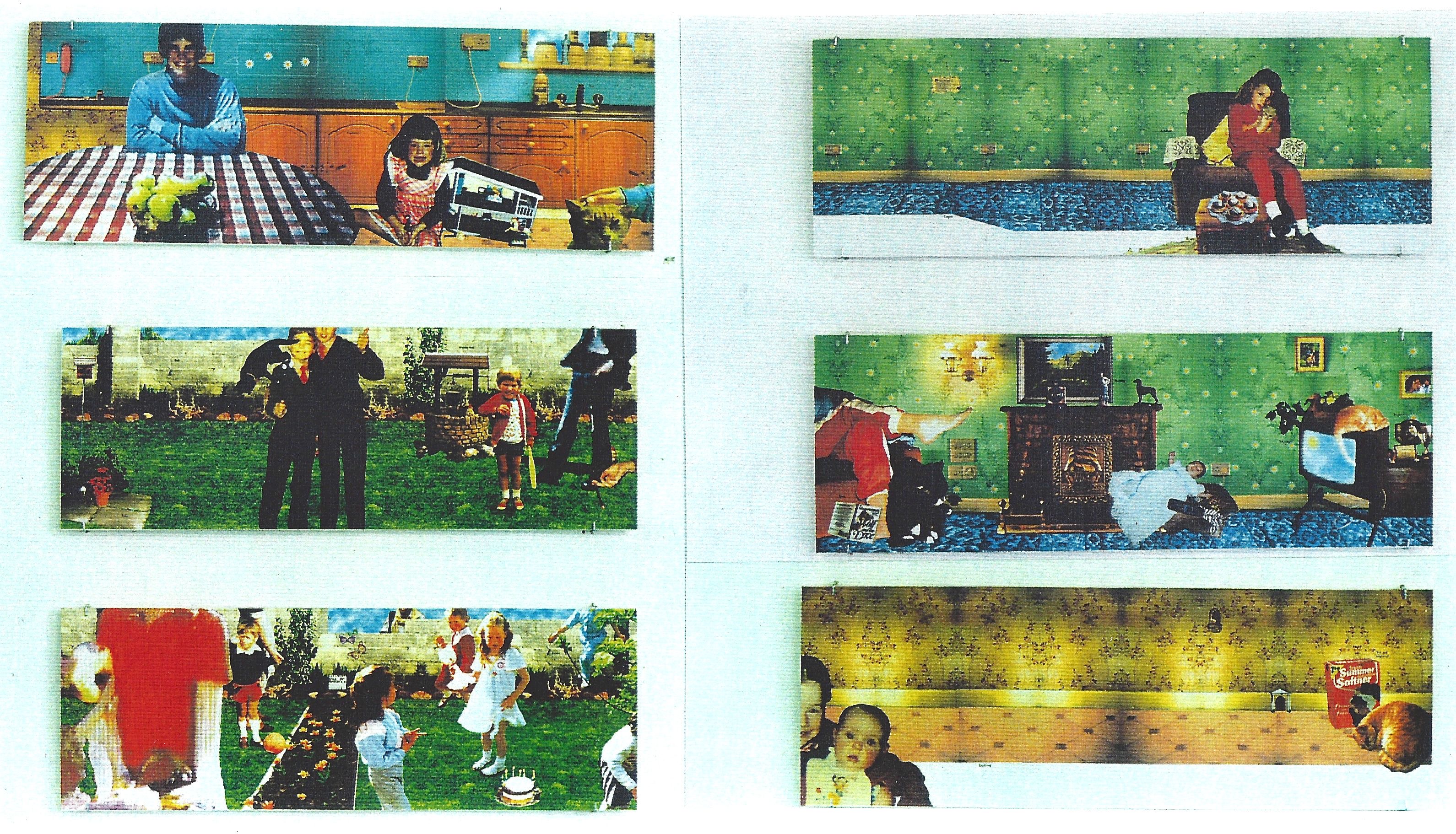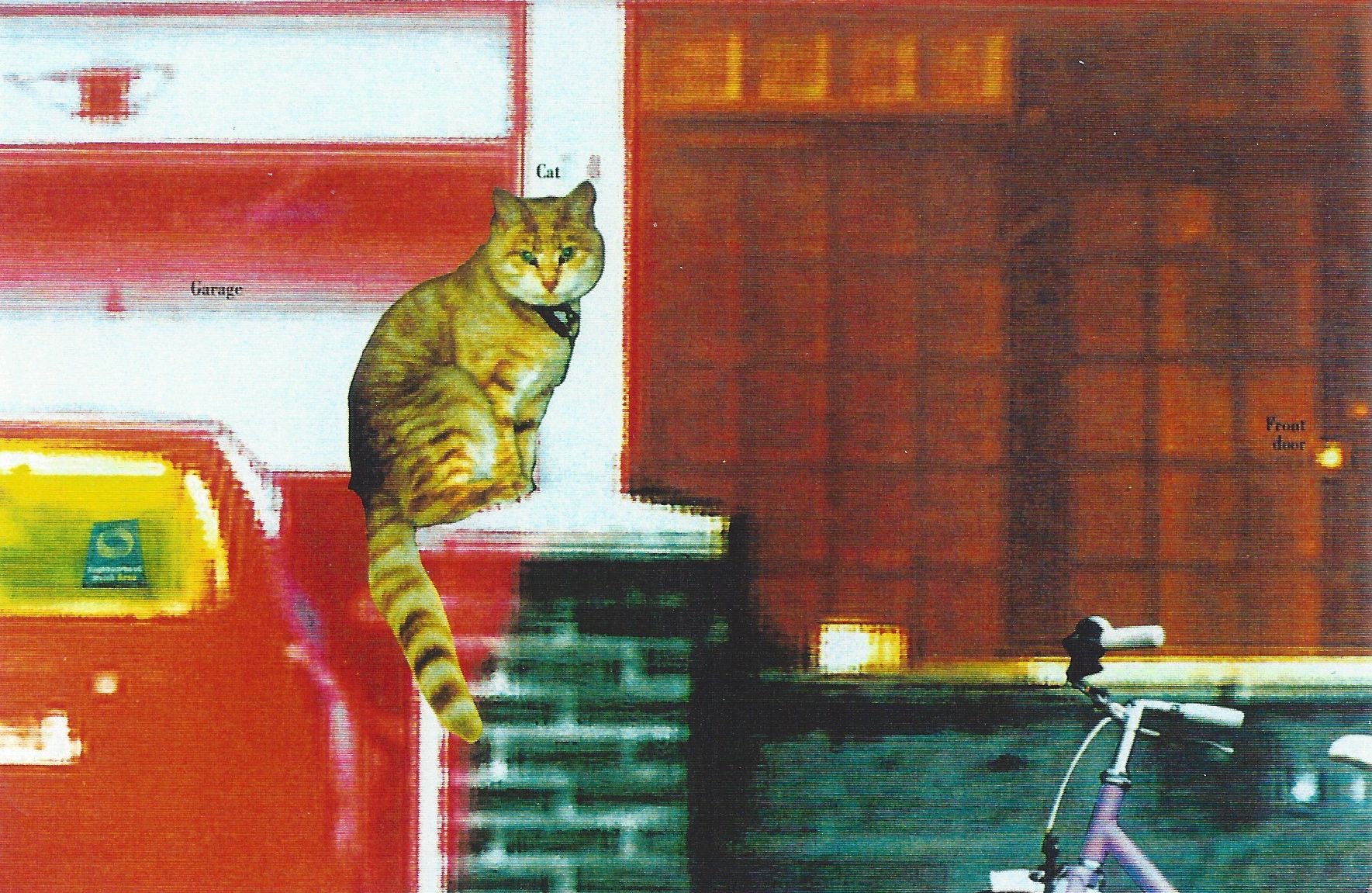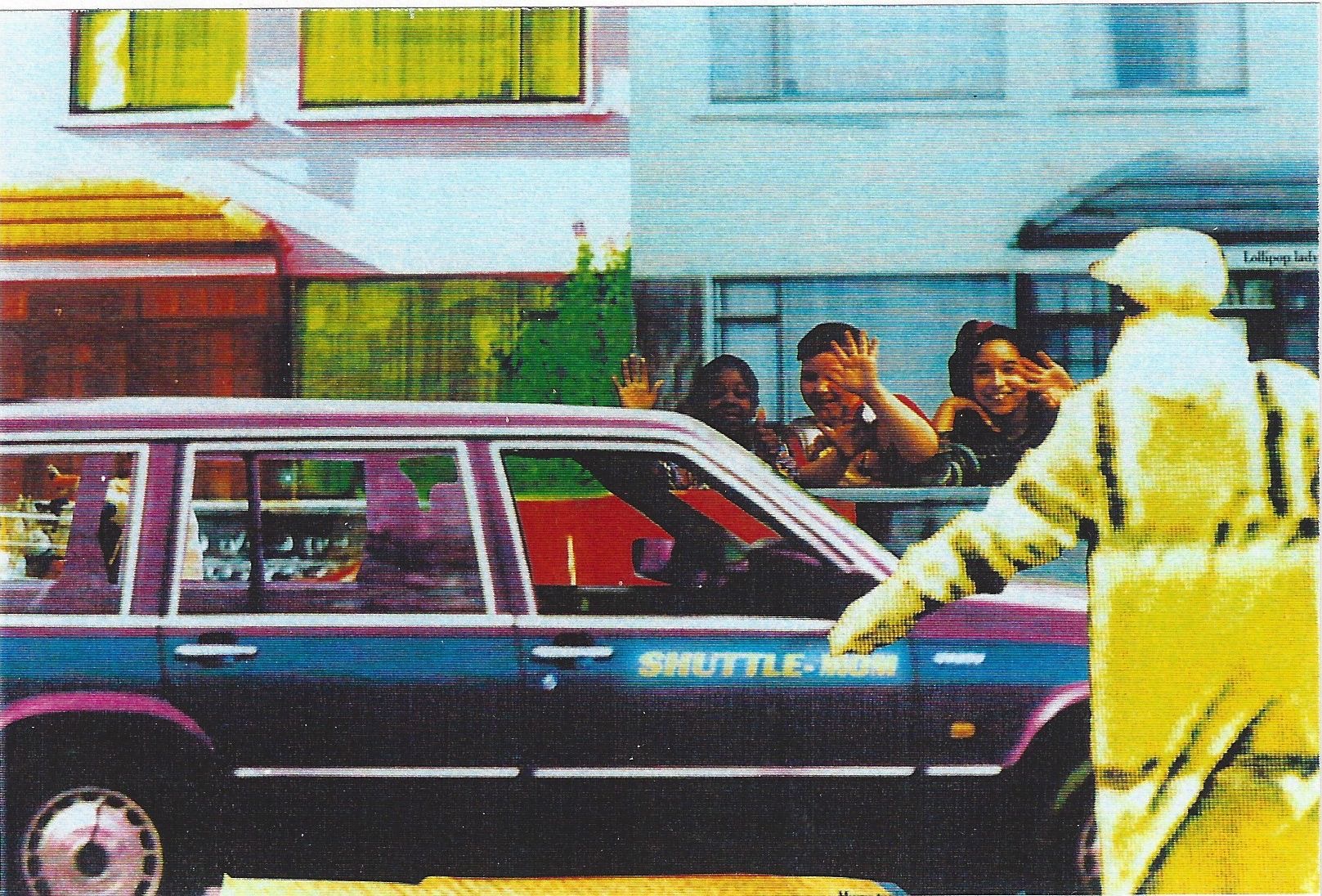Suburbia
Gerard Fox - 1999 - EN
 We make our buildings then our buildings make us
We make our buildings then our buildings make usThe term Suburb refers to a residential area usually found on the periphery of a city. It is the meeting point between urban and rural. The literal meaning of this word Suburb is a geographic one. However, the term Suburbia refers to the social and cultural sphere within this format.
Global cultural homogenisation?
The influence of the post-war suburb on the contemporary western lifestyle is unquestionable. It has contributed to the fashioning of nearly every aspect of today's generic "home". The generic identity of Suburbia has been moulded by its representation through popular culture and the general mass media (TV programming, advertising, etc). lt both feeds from and is fed by its own image. This image could be said to sit comfortably along side other forms of global cultural homogenisation.
From the commercial media through to children's education, the Suburban tract house "home" is portrayed as an all-encompassing standard. Some of Suburbias more cynical critics cite this stereotyping of the home as akin to moral and social propaganda. "It is what you are born in, it is what you will live in, it is what you will die in."
Having been born and raised in a prominent suburb of Dublin, it is obvious that I have a personal experience of this environment. In my project it is this personal experience that I have set against the more generic suburban format. What makes a house a home and a street a neighbourhood? This project is an attempt to evoke a mental image of a social reality, by showing the inevitabfe personalisation of the anonymous. 'It may just be a tract house, but its my tract house.'

Since the post-war explosion of the Suburb in Europe & America, much academic writing and analysis on the subject of suburban housing and on the society it has created. Most of this writing subscribes to at least one of two generic critiques.
1. The suburban format
Best described by Lewis Mumford in his publication 'The City in History' (1961):"Multitude of uniform, unidentifiable houses, lined up inflexibility, uniform distances, uniform roads, treeless communal wasteground, people of the same class, people of the same income, People of the same age group, witnessing the same television performances, eating the same prefabricated foods from the same freezers, conforming in every outward and inward respect to a common mould."
2. Commercial mythology, 'The Good Life"TM
The rural ideology of escapism and differentiation becoming a quasi- rural reality. The manicured housing estate - home ownership as the bastion of society. 'I live in a lovely, quite residential area.' This commercial bastardisation romanticising the suburb represents a meeting point between nature and commerce. Leading to the rhetoric of family and domesticity playing an important role in today's commercial and advertising wodd. "Healthy, wealthy and wise"
1. The suburban format
Best described by Lewis Mumford in his publication 'The City in History' (1961):"Multitude of uniform, unidentifiable houses, lined up inflexibility, uniform distances, uniform roads, treeless communal wasteground, people of the same class, people of the same income, People of the same age group, witnessing the same television performances, eating the same prefabricated foods from the same freezers, conforming in every outward and inward respect to a common mould."
2. Commercial mythology, 'The Good Life"TM
The rural ideology of escapism and differentiation becoming a quasi- rural reality. The manicured housing estate - home ownership as the bastion of society. 'I live in a lovely, quite residential area.' This commercial bastardisation romanticising the suburb represents a meeting point between nature and commerce. Leading to the rhetoric of family and domesticity playing an important role in today's commercial and advertising wodd. "Healthy, wealthy and wise"

